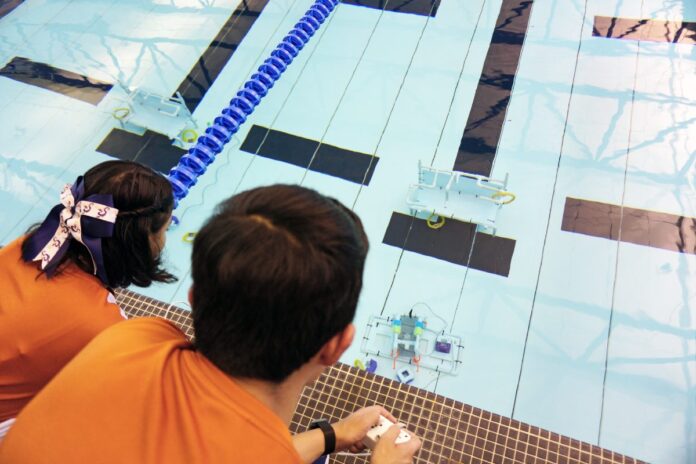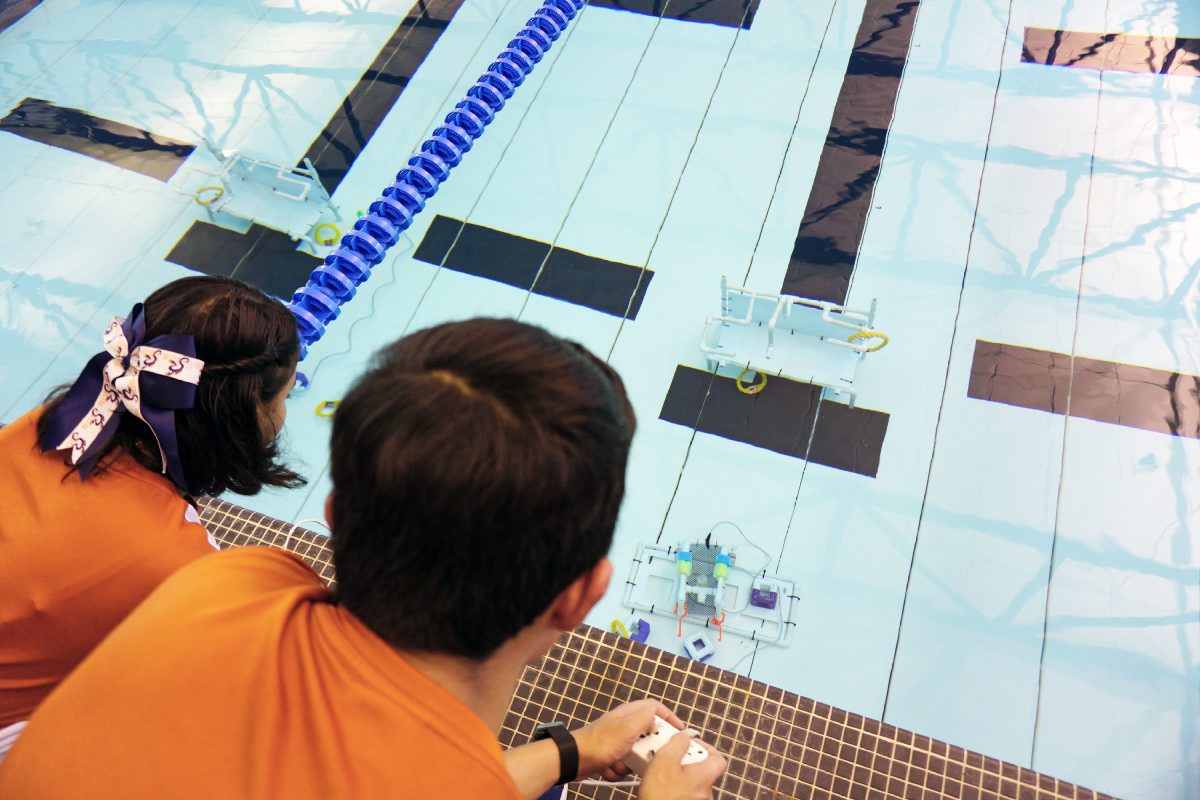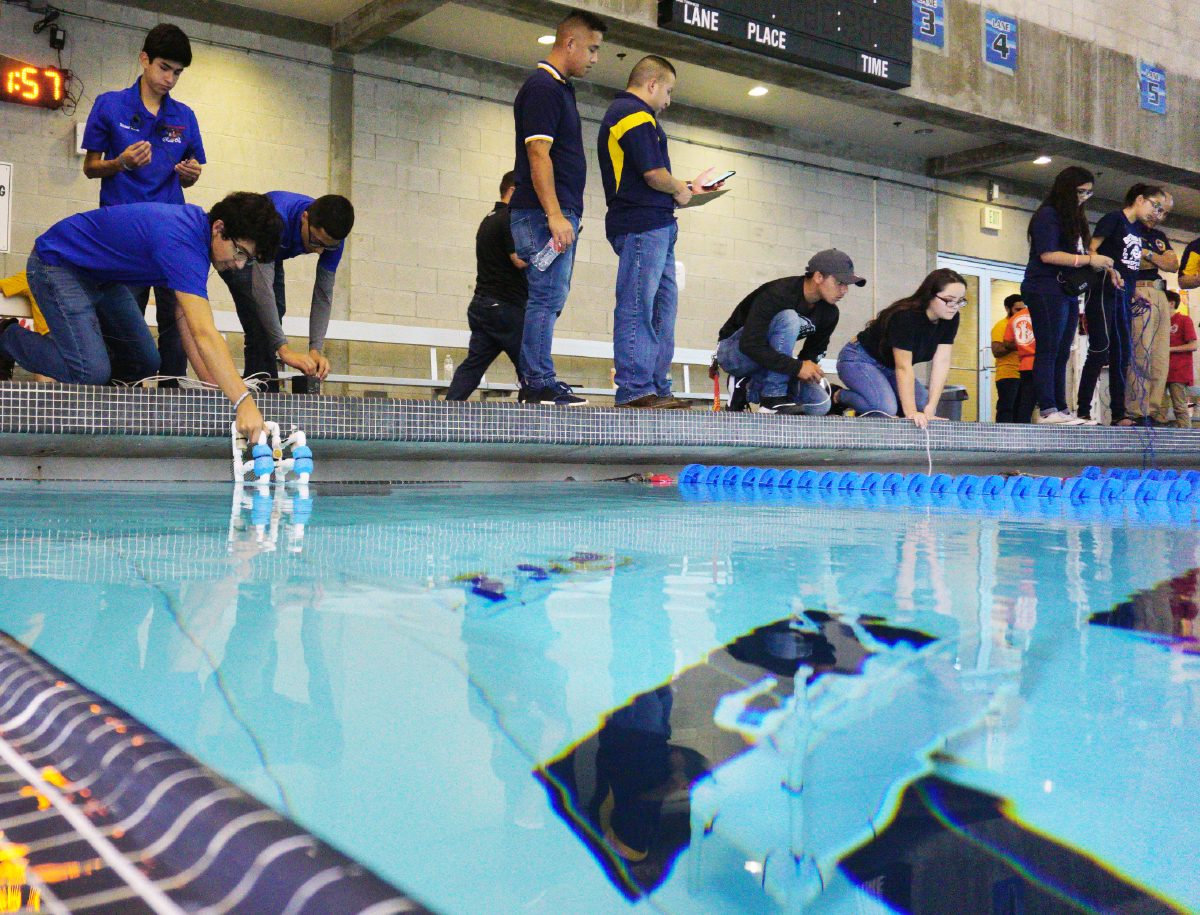BROWNSVILLE — Nearly 40 high school robotics teams from around the Rio Grande Valley faced off during the SeaPerch Challenge yesterday at Margaret M. Clark Aquatic Center.
The competition is part of HESTEC and was created through a partnership with the U.S. Navy. It challenged teams to build an aquatic robot they could maneuver though an underwater obstacle course and mobility challenge.
Pablo Rodriguez, U.S. Navy education services specialist, said the most important part of the competition was the interview during which teams explained the rationale behind their robotic design decisions. The aim of the SeaPerch Program is to introduce and keep students interested in the science, technology, engineering and math fields — also known as STEM.
As a Brownsville native who has traveled the world while serving with the U.S. Navy, Rodriguez said careers in science in or outside the military open up a diverse array of careers for students.
“We’re obviously a consumer of universities and STEM programs,” Rodriguez said, adding that the U.S. Navy has partnered with the university on HESTEC for 17 years. “We’re one of the first organizations creating awareness of STEM (among students) so they can be exposed to it early on, stay in school and get good grades.”
Rodriguez said the SeaPerch Program curriculum is geared toward teaching students physics and engineering concepts. Participants were challenged to build a remotely operated vehicle using PVC, motors and motherboard, foam and other materials. Their robots had to be able to sink, have enough buoyancy to move through the water and be able to pick up and move objects.
Winners will advance to the international competition, said UTRGV program coordinator Milton Hernandez.
Lincoln High School students said it was their first time building a robot for the competition. One of the toughest parts was soldering the motherboard without overheating it, said 17-year-old Yajaira Garcia.
“The hardest part was trying to control it under water,” Nancy Mendoza, 17, said, adding that the team inadvertently skipped a step at one point. “We read everything so we wouldn’t make the same mistake again.”
Kimberly Olvera, 18, said the team tested three or four versions of the floatation sponge attached to the robot before they got it to submerge.
Stephanie Torres, 17, and Kristian Posada, 17, of Harlingen High School South said the most fun part of the competition was hanging out with the rest of their school’s engineering club as they tested and adjusted their robot.
“We’re like a big family,” Torres said.
Posada said she was surprised to see girls represented fairly well on the teams and hope more continue to get involved.
“I know girls are a big minority in this field, and I don’t think girls should be intimidated,” Posada said. “The fact that you’re a girl isn’t going to change anything.”








